Automatically incrementing serial numbers
-
since we're still in the "collecting ideas" phase of this, I want to add another aspect to the discussion.
I'd argue that the point of this idea is to enhance serial part production via FFF. As such, when producing hundreds if not thousands of a part, the aim is to fill the printer's build plate with as many instances of the part as possible. This is as of now done in the slicer. The slicer doesn't multiply the instances of the sliced gcode though, but slices the whole plate of models, at least not as I'm aware - looking at you, Cura - which not only adds to slicing time (negligible), but also file size (less negligible). It also means that parts aren't actually identical, since the infill structure is "fixed" and thus might be oriented differently in each instance (also possibly rather negligible).
It would however mean, for the sake of adding serial numbers into the parts, that for each instance of the part on the plate there needs to be an increment in the SN. If the slicer were to slice one instance of the model, using relative coordinates and then jumping to the next starting point in each layer, effectively printing a full plate of parts but only referring to a single version of the gcode, this wouldn't be an issue since the SN would already have been incremented by the previous instance of the part.
I realise this is one, but probably not the most important reason to rethink how slicers handle mass printing of a single part...
So if we, like indicated above already, make all of this the responsibility of the slicer, we could make a list of requirements:
- adding the function of "text" gcode aka pre-sliced alphabet, possibly appended to the end of the gcode, and using goto to print the actual text (does RRF already support goto?)
- adding a way to insert/position the text on a model in the slicer
- adding the capability to RRF of altering the gcode to increment a variable that is the string of the SN or is used to calculate it
- per my idea above, change the handling of how multiple instances of a model are printed, e.g. using one instance of gcode instead of many - this would also make mass production more consistent with how I imagine it is already done on belt printers, so running the same gcode over and over
some things to keep in mind:
- we're still talking about text in the XY direction only. depending on the model, this might not be feasible, but I don't see how this would work on a surface that is not coplanar with the xy plane
- depending on the model, it would also mean that the build plate can be packed less optimal
please let me know if you think that this is OT and shouldn't be discussed here...
Best, Niklas
-
It’s an interesting concept!
Given that the serial number should be supplied by a server, wouldn’t it be easier to request a new GCODE for each print? Adding serial number plates in a slicer world be much more flexible than adding it via RFF. -
@pakue That is a very interesting idea. The network-acquired serial number was an afterthought I included when typing up the message. Originally, I had only thought that the individual g-code file would self-increment. But your idea leads to a magnificent world of g-code streaming servers. Kinda like the way the world is inching towards binary-streaming servers: no installing software, run it remotely and stream the input/output.
-
@sonderzug Those are some great thoughts. I'll have to come back and read again to fully absorb them, but I like it a lot. I actually have been always thinking about this in 3D -- not X/Y planar. The "regions" could be any arbitrary orientation. To achieve the 3D version, we would just have to keep track of the separate layers of the digit, rather than have one layer that could be replicated for all layers of the digit. It certainly adds a bit of complexity, but I think it's manageable.
The idea of instancing g-code is a very good one. PrusaSlicer already instances the models (when requested, with the instance command). So, it shouldn't be too much of a stretch to implement that into g-code as well. In PS, you can either copy/paste an object, which makes two separate objects, but an instance is truly an instance -- any changes made to one, are transferred to the other and sliced. The g-code is all one thing, though, but with the ability to robustly handle relative positioning/instancing, this could all work together nicely.
-
@bot Ok, it will be interesting to see how this would work across non-XY-coplanar surfaces. to illustrate, I whipped up a quick demonstrator...
easiest case: text lines printed on planar surface (this should be the first goal IMO since this is basically what we discussed until now)
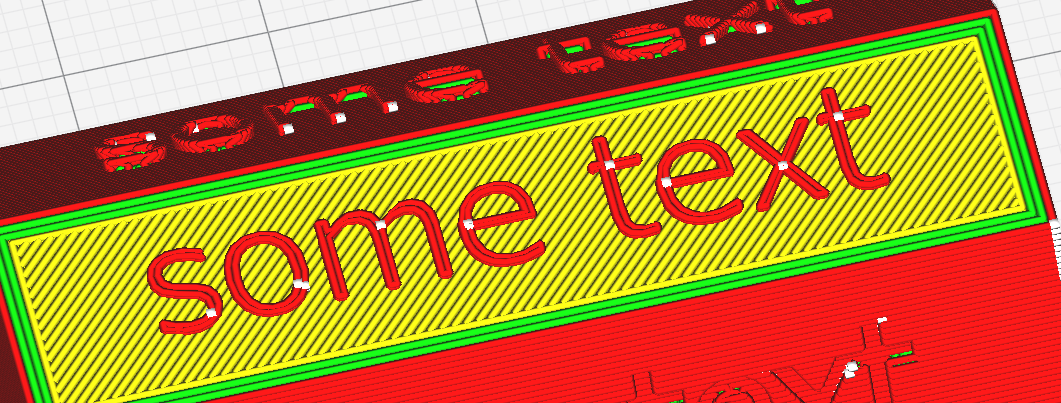
more difficult, since it is basically just an arrangement of bumps/path offsets in the perimeters* (outermost perimeter might suffice):
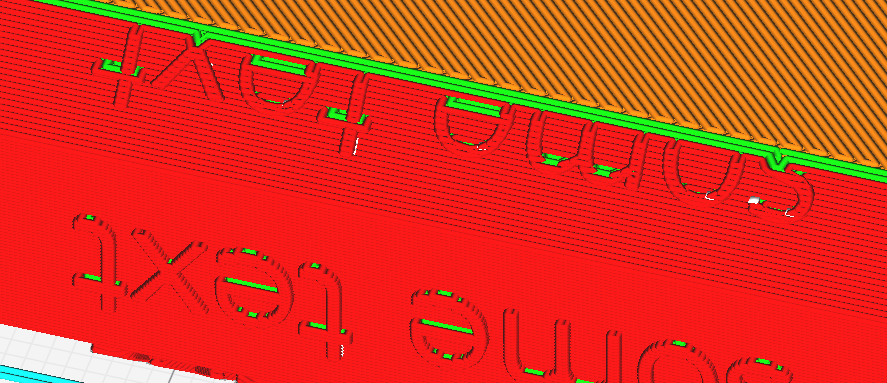
also more difficult than the first, since it involves more perimeters and cutting out of the infill: negative extrusion

to me, the preferred version for text on vertical or non-horizontal surfaces: slightly inward extruded text, this looks the best, but is basically a copy of #2 but with more perimeters affected

*thinking more about this description of how the text is displayed, this might actually be the way to add text (or texture, for that matter) afterwards - offsetting the perimeter by x for certain areas over y amount of layers... doesn't Ideamaker allow to apply textures to STL files? How do they do it?
food for thought...
-
@sonderzug Yes, part of the problem that arises, especially in the "3D placement" case, like you mention and illustrate with your photos, is that the numbers become "merged" with the part, and the perimeter of the serial numbers is one and the same as the rest of the model.
This is where we could make the "engineering compromise." The slicer would actually produce a separate 3D region, which contains the digit. It would have its own infill and perimeters.
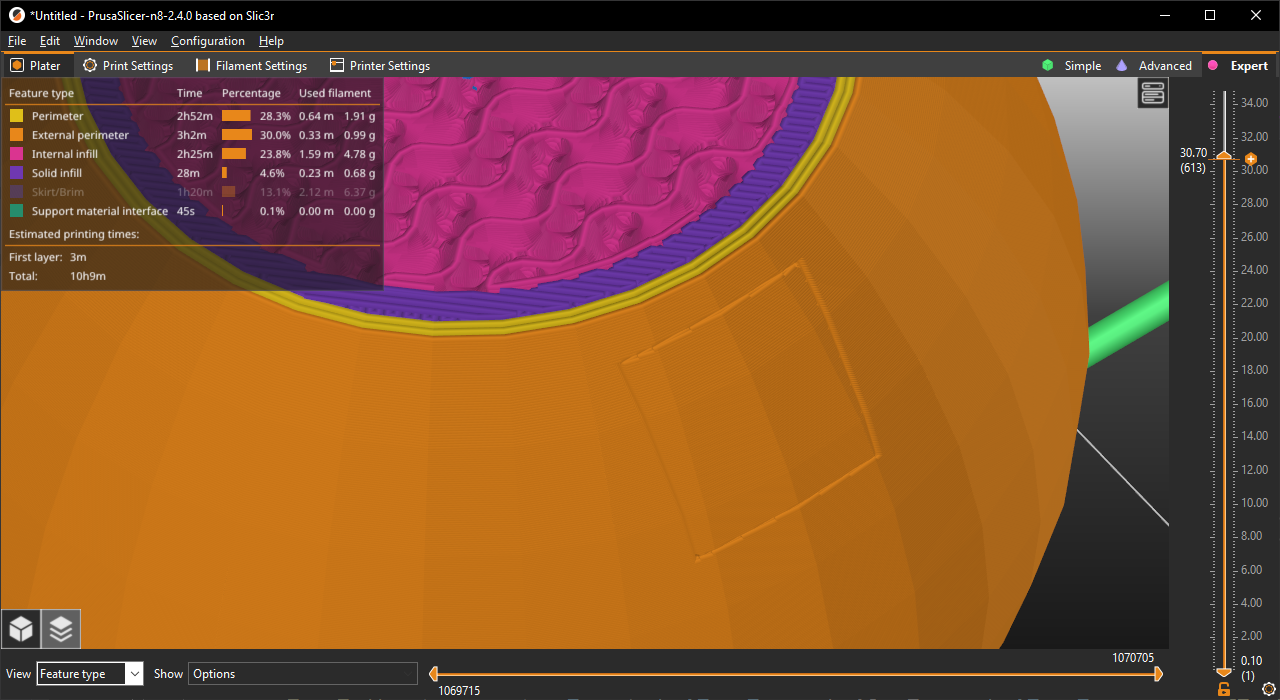
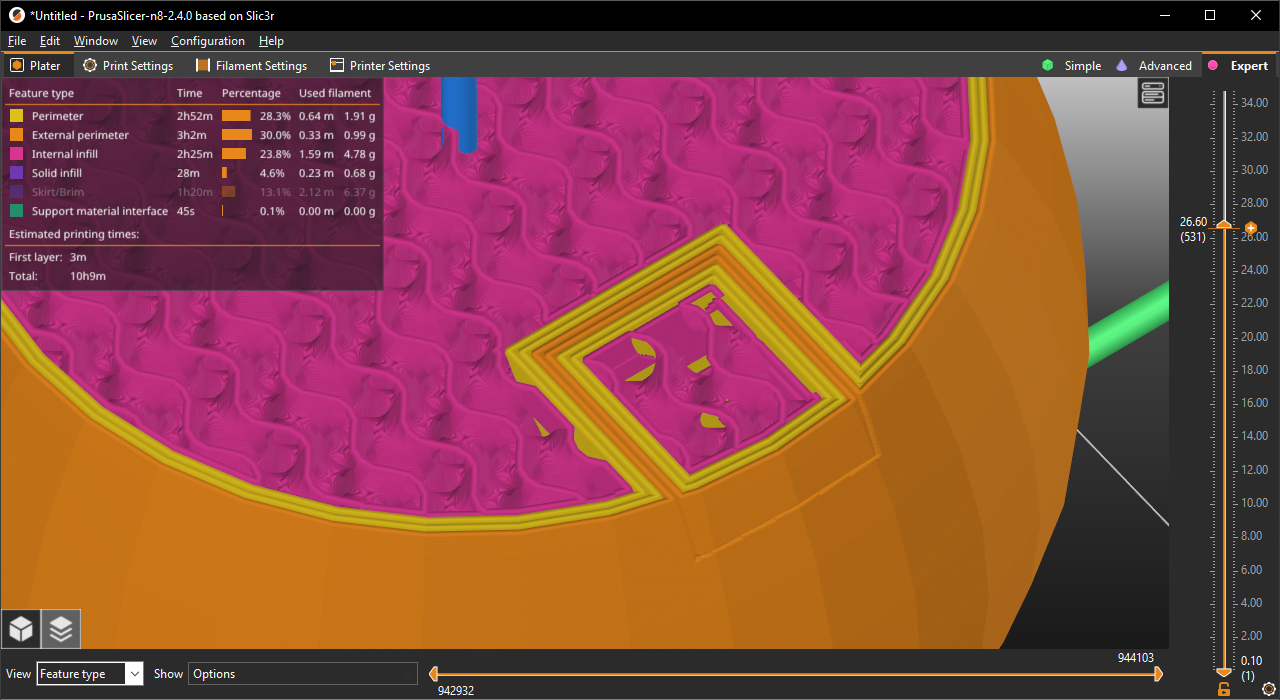
Imagine if that region is a single digit of the serial number. Each digit gets its own region. That is what makes this possible. The reserved region remains the same volume, so the toolpaths of the main part don't change.
-
@bot Here is an example with the spaces for 3 digits reserbed. (These would be HUUUGE digits. This is just an example.)
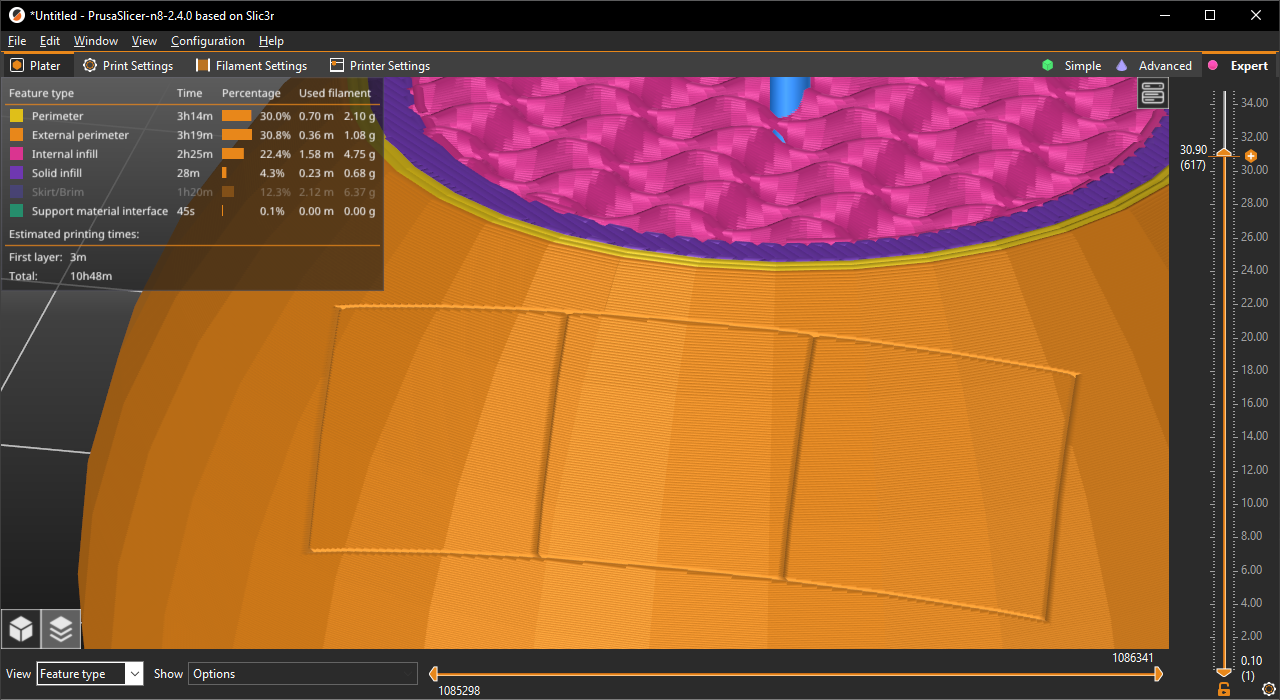
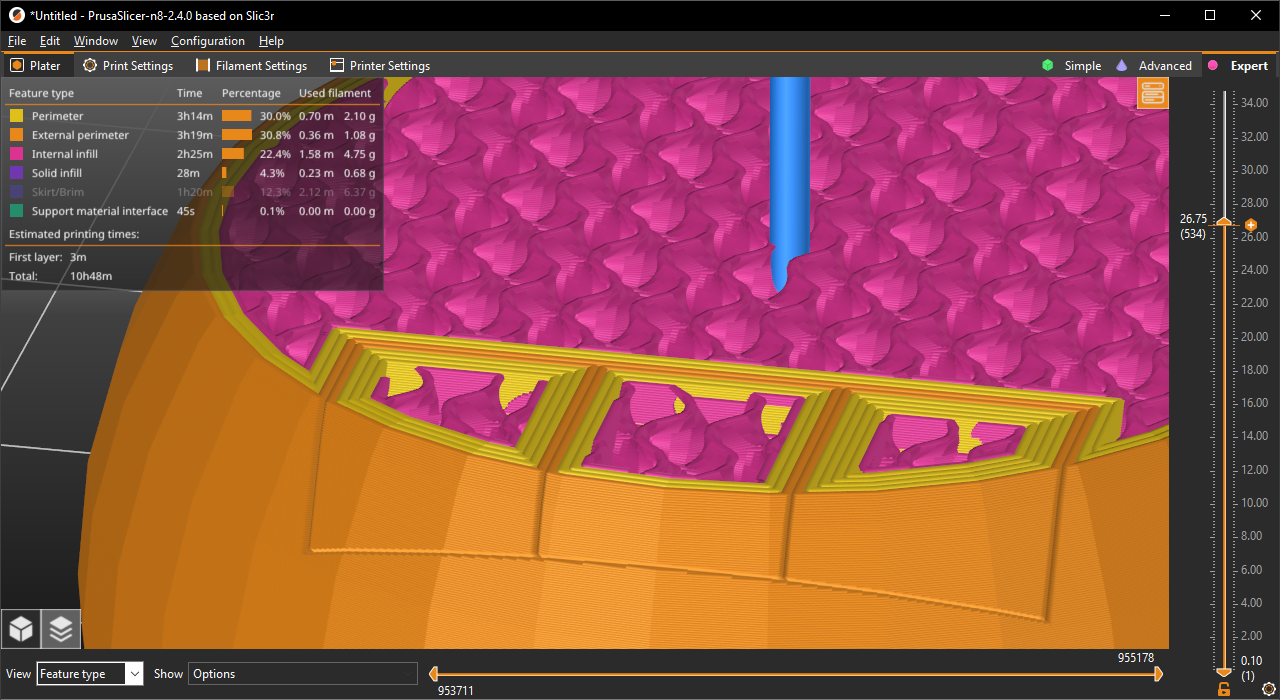
-
instead of a digit, could it be a QR code or bar code? Perhaps more space efficient at the expense of human readability?
-
@bot Why not do it via a displacement map on the actual STL/3MF/mesh? That makes it very flexible to add other things instead of characters and is independent of the part surface.
-
@phaedrux Barcode would be more practival than QR code. I don't know how we could encode every possible serial number in QR codes in an efficient manner. Even if we separate the code into chunks, it's still a lot of chunks to generate and store as toolpaths. But, I don't know the specs -- maybe it turns out to be fewer toolpaths than with all digit combinations? The barcode would be a direct replacement for numerical digits, afaik.
@Pakue from what I can envision, I don't see a way to make the numbers dynamically change for each print if we emboss the numbers directly into the main print. We need discrete regions that can be sliced, printed, and stored separately.
-
@bot I'd imagine it is easier (and more flexible) to reslice with a different parameter (serial number or similar), than it is to dynamically replace portions of existing gcode and handling it on the µC. Especially if the printer is running via an SBC that has more than enough compute power for slicing.